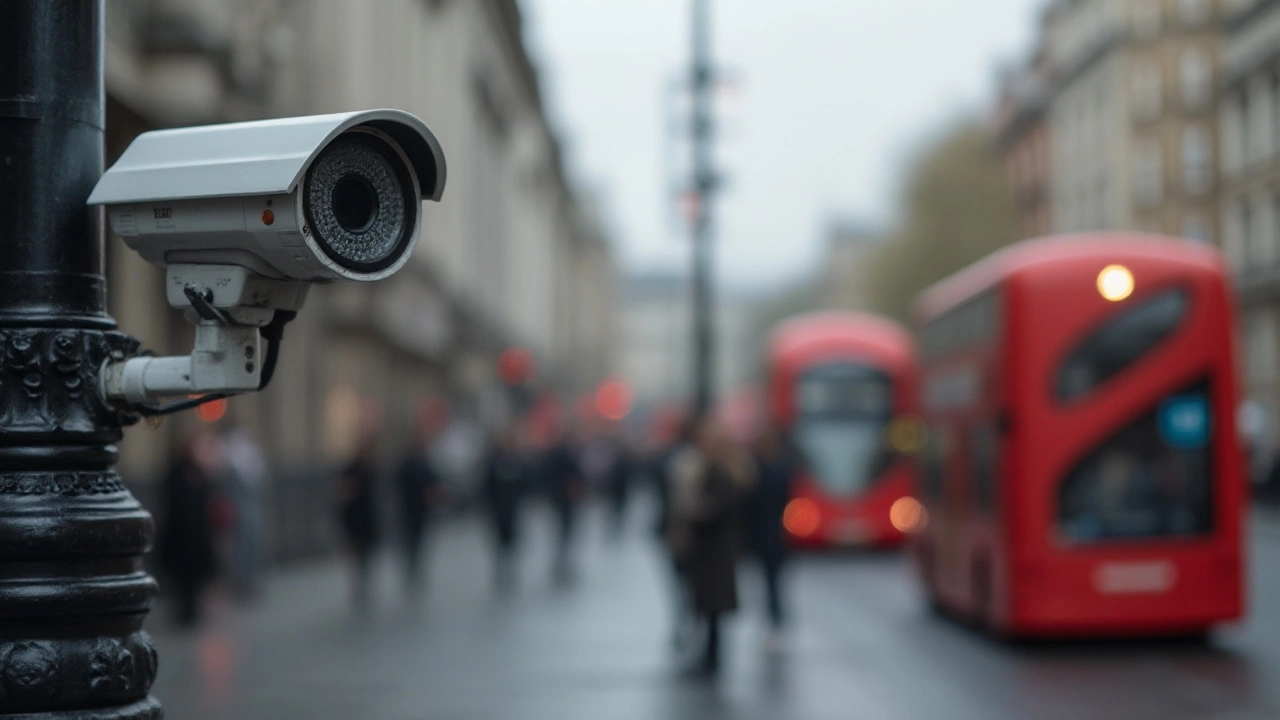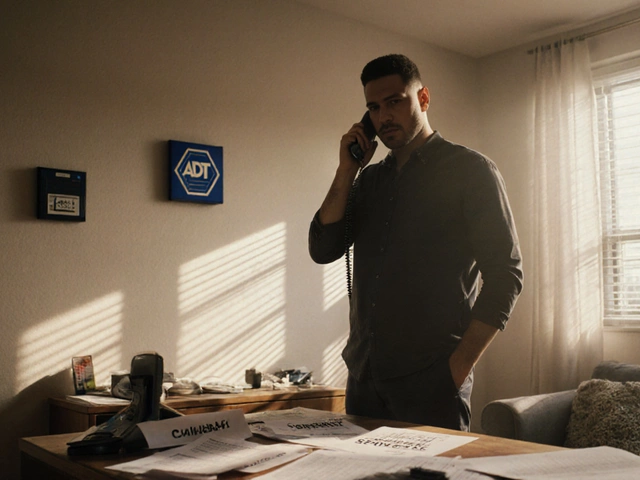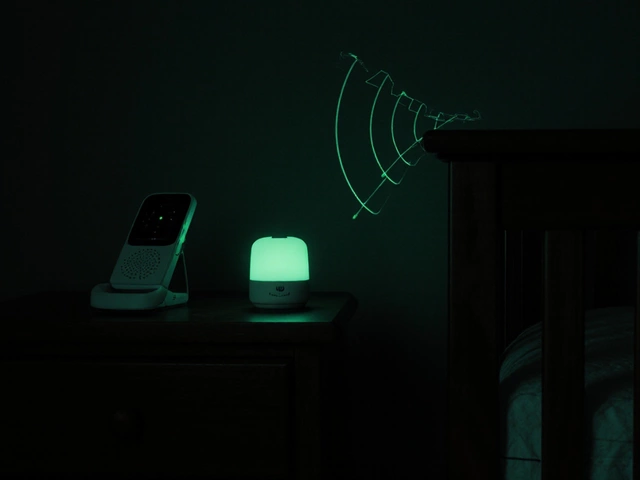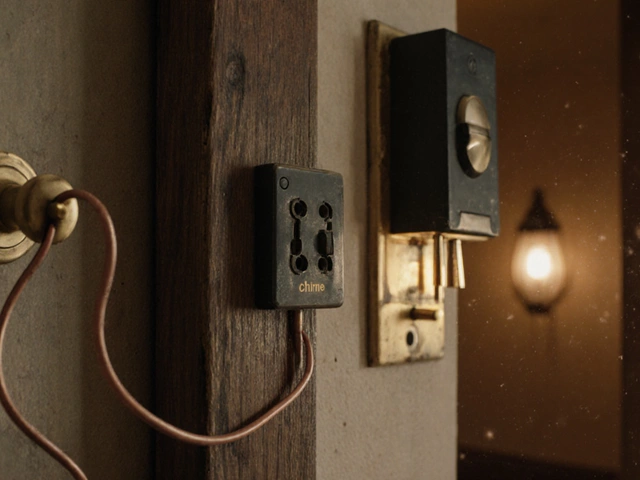In today's world, surveillance cameras are more than just silent observers perched on walls. They're integral to safeguarding our spaces and providing peace of mind. One of the big questions many people have is whether these cameras record everything all the time.
Diving into the nuts and bolts of surveillance technology, different cameras have unique capabilities and operating modes. Understanding these can save money and ensure you select the most suitable setup for your needs, making your property as secure as possible without busting your budget.
- Understanding CCTV Recording
- Factors Influencing Recording
- Costs of CCTV Systems
- Types of CCTV Cameras
- Choosing the Right System
Understanding CCTV Recording
The question of whether CCTV cameras record all the time is both simple and complex. Most cameras designed for surveillance can indeed record continuously, capturing everything within their view twenty-four hours a day and seven days a week. This full-time recording is often a default feature, especially in systems where security cannot afford even a moment's lapse. Institutions like banks or major retailers frequently rely on constant footage to ensure every second is documented. However, it's worth noting that continuous recording can place a significant burden on storage devices. Massive volumes of footage must be archived, categorized, and sometimes searched, creating both logistical and financial headaches. Hence, it’s crucial to weigh the need against practicality when setting up such a system.
On the flip side, not every recorded moment is valuable or even necessary, which is where motion-activated surveillance systems come into play. These systems are smart enough to start recording only when movement is detected. This method drastically reduces the needed storage space because recording is triggered only by substantial activity, such as someone entering a monitored zone. It's an energy-efficient solution that balances both security needs and available resources efficiently, and it has increasingly become popular among home and small-business owners. According to John Tan, a security technology expert, "Smart recording features, like motion detection, allow users to conserve resources and focus on capturing what truly matters."
In the fast-evolving world of CCTV, adapting technology to human behavior paves the way for smarter security solutions."
There's no one-size-fits-all answer to how CCTV recording should be configured; it largely depends on the specific security demands one wishes to meet. A typical CCTV system may offer both continuous and motion-activated options, allowing users to tailor the setup. For instance, a retail shop might opt for continuous recording at the entrance and exits while using motion-activated settings for storerooms or less sensitive areas. Some advanced cameras even include night vision and thermal recording capabilities for added security during low-light conditions, ensuring that no detail goes unnoticed during any shift in lighting circumstances.
For those concerned about installation and maintenance costs, CCTV camera installation costs can vary based on features and complexity of the chosen system, but understanding your needs can help manage initial expenses. While setup might require a worthy initial investment, the long-term benefits, like preventing theft or enhancing safety, usually outweigh these costs. It’s essential to conduct a thorough assessment of what you need before committing to a purchase. In many scenarios, installing more basic models with limited capacity may be a wise start, allowing you to upgrade and scale your system based on actual need and available budget.
Factors Influencing Recording
When it comes to CCTV recording, several crucial factors determine whether a camera continuously captures footage or operates more selectively. One of these is the CCTV recording mode. Many modern systems offer options such as continuous recording, scheduled recording, and motion-activated recording. Continuous recording, as it sounds, captures footage non-stop, day and night. Meanwhile, motion-activated recording begins only when the camera detects movement, which can significantly save storage space and make reviewing footage less cumbersome. Scheduling allows users to define specific times for the camera to be active, catering to varying security needs.
Another significant factor is the type of camera and its technology. Analog cameras typically connect to a digital video recorder (DVR) and are usually set to record all the time, given their limited intelligence compared to newer technologies. On the other hand, Internet Protocol (IP) cameras can harness their connectivity and processing power to offer more sophisticated recording options, like analytics-driven alerts that trigger recording only when specific criteria are met. Emphasizing the role of modern surveillance systems, IP cameras are more likely to use latest advancements and contribute to effective security setups.
Storage capacity also plays a vital role in determining recording patterns. High-quality, continuous footage demands substantial storage, prompting many users to adopt systems with significant hard drive capacity or cloud storage options. According to a report by IHS Markit, global shipments of video surveillance cameras reached over 130 million in 2022—a number indicative of the increasing sophistication and implementation of these systems. Configuring the recording settings based on storage is essential to balance quality and duration.
Finally, we must consider security cost implications. Investing in a system with smart recording capabilities can initially be higher in cost but offer substantial savings by reducing storage needs and simplifying footage management. As quoted by a security expert from TechRadar,
"The strategic use of smart recording can enhance security while optimizing operational costs."Choosing the right recording mode can, therefore, directly influence both efficacy and expense.
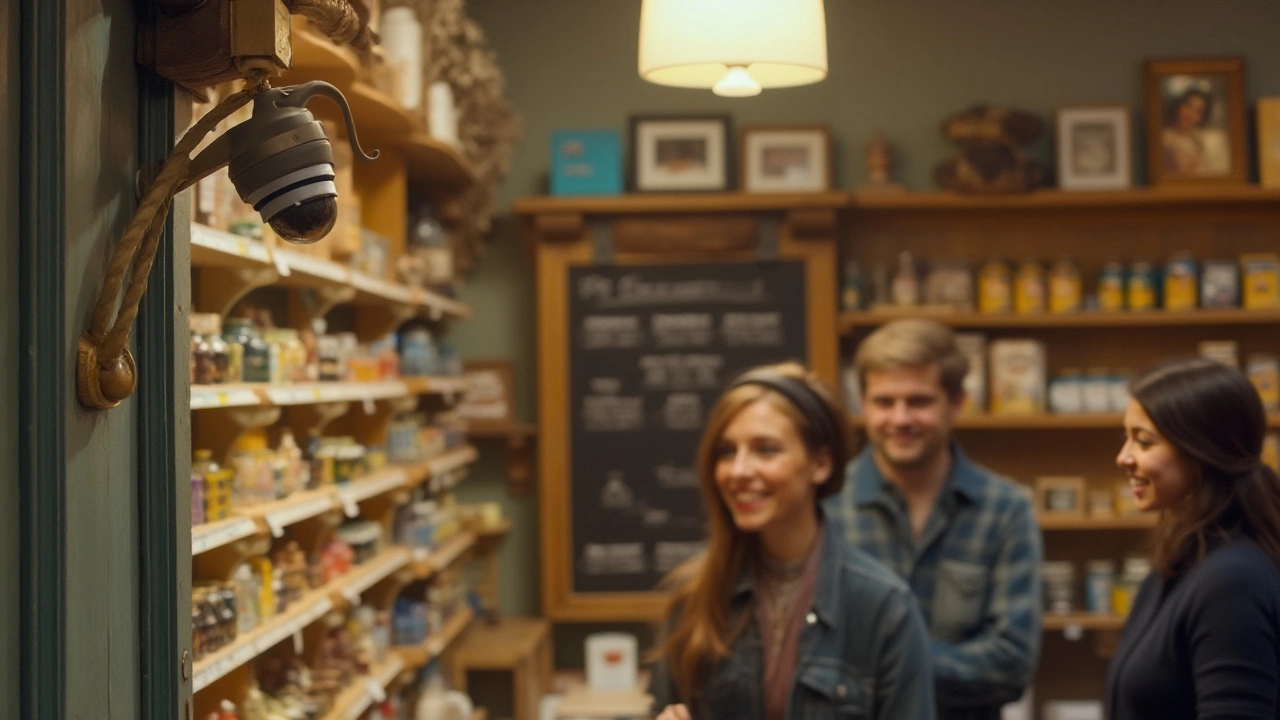
Costs of CCTV Systems
Investing in a CCTV system can range from fairly modest to quite substantial depending on a variety of factors. The first element to consider is the number of cameras you require. This will be influenced by the size of the area being monitored and the level of detail you'd like to capture. Larger properties or businesses with sprawling facilities may find themselves investing more as they'll need multiple cameras strategically placed to ensure comprehensive coverage.
Beyond the number of cameras, the type also plays a significant role in the cost. Basic analog cameras are usually less expensive than digital IP (Internet Protocol) cameras, but they might not offer the same level of image clarity or additional features such as remote access. IP cameras often provide higher resolution and can be easier to integrate into modern network systems, making them a popular choice despite the higher initial cost.
Then there's the aspect of installation fees. Some people might opt for a DIY approach, which significantly reduces costs, except for the time and effort required to ensure everything runs smoothly. Hiring professional installation services ensures your system is set up correctly and functioning at optimal levels but naturally involves an additional expense. This can be particularly true for more complex systems in commercial settings.
Maintenance is another ongoing cost that should not be forgotten. Regular check-ups, occasional repairs, and software updates are vital to keep a surveillance system effective over the long haul. It's also worth considering the potential cost of upgrading to newer models as technology evolves, improving functionality and security.
The Security Industry Association notes that "as technology advances, the costs associated with security systems can decrease, making them more accessible to a broader range of consumers." This makes it a good practice to keep an eye on trends and emerging technologies to get the best value in updates and enhancements.
Another financial consideration is the type of storage used to keep footage. Traditional DVRs store video locally but may require larger hard drives, especially when recording continuously. On the other hand, cloud storage is becoming more popular due to its convenience and scalability, though it often involves a monthly fee. The decision between local and cloud storage can significantly impact both the upfront costs and the ongoing expenses of operating a CCTV system.
A helpful way to assess potential expenditure is to create a list of priorities. Determine which features are essential for your security needs and which are simply "nice-to-haves." This approach can guide you in balancing performance with budget, ensuring that you're neither overinvesting in unnecessary features nor skimping on critical aspects of your property's security.
Types of CCTV Cameras
Within the realm of surveillance systems, the variety of CCTV cameras available is as diverse as the purposes they serve. Each type has unique features and benefits that cater to specific needs, making selection a pivotal step in setting up an effective security strategy. Whether you're looking to monitor a cozy coffee shop or a sprawling industrial complex, the right camera can make all the difference. These devices vary in form, functionality, and cost, and choosing the right one depends on multiple factors like location, budget, and desired features.
One of the most common types is the dome camera, named for its distinctive dome-like shape. These cameras are widely used in retail spaces and offices owing to their unobtrusive design and versatility. Installed on ceilings, they offer a wide field of view, making it challenging for individuals to tell which direction the camera is pointed. Another popular choice is the bullet camera, designed for long-distance viewing. Known for their cylindrical shape, these are primarily used outdoors, often mounted on walls or ceilings. Bullet cameras are equipped to withstand harsh weather conditions, making them ideal for perimeter surveillance.
On the more technical side, there are PTZ (Pan, Tilt, Zoom) cameras, which, as the name suggests, have the ability to move left and right, up and down, and zoom in and out. PTZ cameras provide an interactive live feed, often used in shopping malls and public spaces where monitoring vast areas is a priority. For those looking to cover extensive outdoor areas with a minimal number of devices, PTZ cameras might just be the answer. To add another layer of flexibility, wireless CCTV cameras free users from the constraints of wired connections, using Wi-Fi to transmit video and audio signals. This allows for convenient installation and is particularly useful where wiring can be a challenge.
"CCTV technology has evolved substantially over the years, offering better resolution, wider dynamic range, and improved low-light performance. Understanding these advancements helps in making informed purchasing decisions," suggests a recent report by Security Technology Review.
In addition to these, night vision cameras are a must for areas that require round-the-clock surveillance. These devices use infrared technology to deliver clear images even in low-light or no-light conditions, ensuring that nothing goes unnoticed when the sun goes down. And if blending in with architectural elements is a priority, hidden cameras come into play. Used primarily for discreet monitoring, these cameras are strategically concealed within objects like clocks or smoke detectors to capture footage without significant detection risk.
Choosing the right type from among these can hinge heavily on understanding the security goals and physical environment of the area under surveillance. Start by assessing where exactly these cameras will be placed, how they might affect privacy, and importantly, the security cost associated with their purchase, installation, and maintenance. Investing time in this evaluation process can lead to a more robust and responsive security setup, suited to your specific needs.
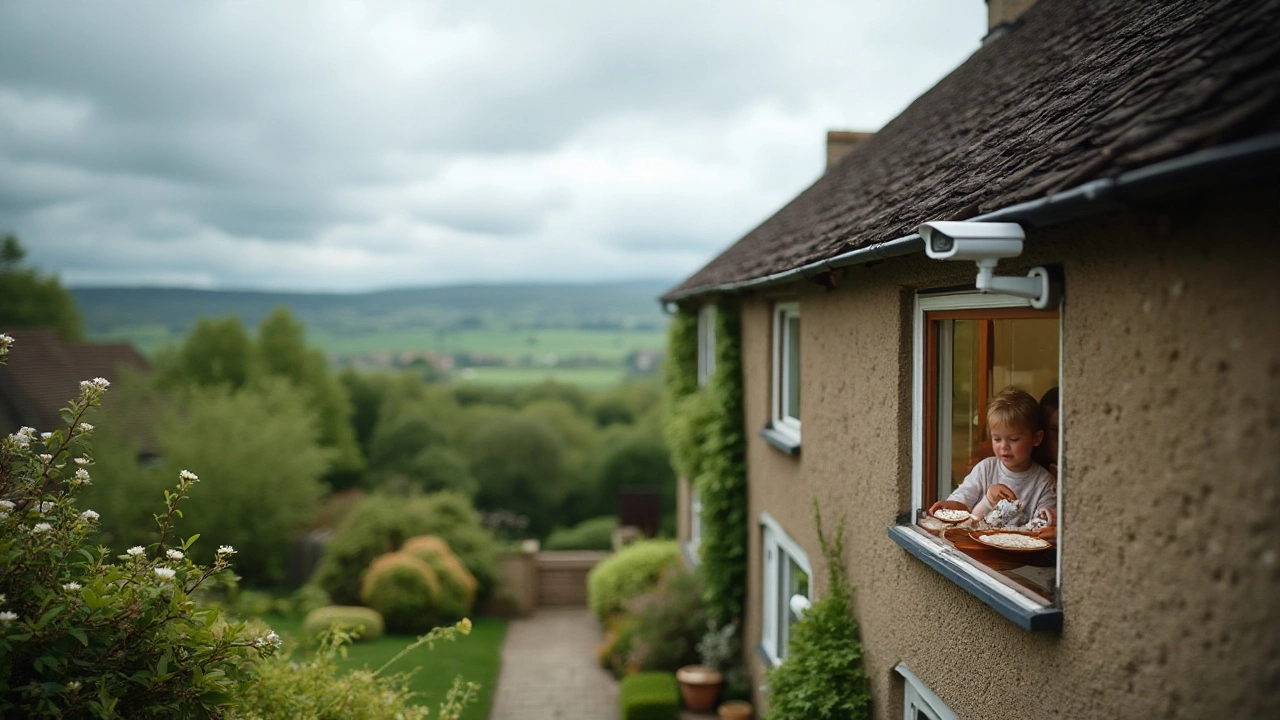
Choosing the Right System
Selecting the right CCTV system can often feel daunting. With an expansive range of products and features available on the market, it becomes a task requiring a blend of foresight and careful planning. The process begins with clearly identifying your security needs. Are you looking to monitor a small home, a sprawling industrial site, or something in-between? Each scenario demands different specifications in terms of camera types, storage solutions, and resolution. High-definition cameras promise clear images, but they also consume more storage space, thus impacting cost. Balancing these factors is the crux of choosing an appropriate surveillance system.
Next, consider the recording options available. Some systems offer continuous recording, while others are triggered by motion detection or scheduled for specific times. If your concerns are centered around low-traffic areas, a system with motion-triggered recording might save on storage and cost. In high-risk zones, however, continuous recording could be indispensable. It's critical to assess your unique situation to make an informed choice between CCTV recording options that will best address your particular security challenges.
Budget is quintessential when deciding on a system. According to a 2023 survey by the International Association of Security Experts, an average small business in New Zealand spent about $1,200 on installing a basic four-camera setup. Costs can escalate rapidly with more sophisticated technologies, so assess whether the expenditure aligns with the level of threat you perceive. Have a clear budget in mind but be flexible as some features might prove invaluable. The old adage "you get what you pay for" often holds true here. Investing wisely can safeguard not just your property but your peace of mind.
Integration with existing security systems can be a crucial consideration. Modern surveillance systems often come with smart technology capabilities, allowing you to connect them to other devices such as alarms, access controls, and more. This can provide a holistic security approach, offering greater control and ease of access to recorded footage. With advancements in cloud storage, many now opt for systems with cloud integration, providing remote access and redundant backup capabilities that traditional physical storage cannot.
Additionally, the provider's reputation is non-negotiable. Look for systems that come highly recommended by professionals and users alike. Trusted brands often have years of industry experience, ensuring reliability and quality. An often-cited comment by a leading expert in electronic security technology, Jeff Johnson, reminds consumers, "Investing in a reputable brand minimizes the risk of future headaches."
Remember, deciding to go cheap might save you dollars now, but cost you security and effectiveness down the road.Research thoroughly, read reviews, and consult experts if needed. An informed investment today stands to protect you from potential losses tomorrow.
Finally, ensure whichever system you choose complies with local regulations around surveillance and data protection. This is particularly important if you plan to monitor public areas or commercial spaces. Misalignment with legal standards can result in fines or forced removal of your CCTV installation. By carefully considering all these aspects, you ensure that you not only select a system that meets your immediate needs but also one that serves effectively for years to come.

